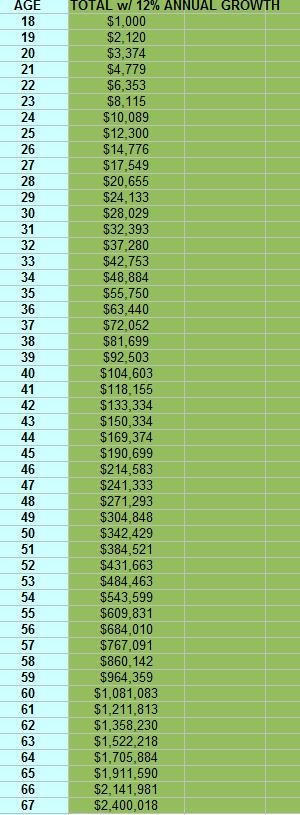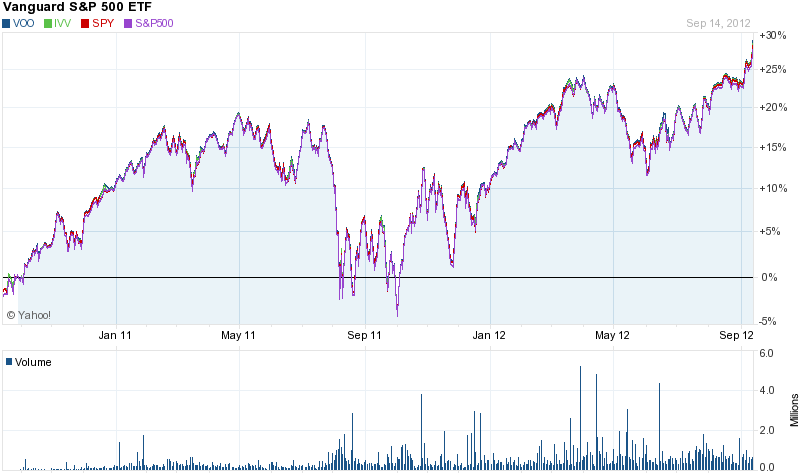S&P 500 ETFs What Every Investor Should Know (SPY VOO IVV)
Post on: 5 Июль, 2015 No Comment

The S&P 500 is probably the most accurate quantifier of the U.S. economy, measuring the cumulative float-adjusted market capitalization of 500 of the nation’s largest corporations. (Other benchmark indices measure merely stock prices, which is limiting.) So with the advent of exchange-traded funds in the late 1980s, it seemed natural to create an ETF comprised of proportionate ratios of the stocks featured on the S&P 500. In fact, the very first ETF ever created indeed tracked the S&P 500 in such a fashion. That ETF was quickly sued out of existence (long story), but in 1993 investment management company State Street Global Advisors developed an equivalent ETF, the Standard & Poor’s Depositary Receipts (SPY ).
Better known by its arachnoid acronym, SPDR. it’s the largest and most heavily traded ETF in the world, with net assets of $173 billion. In fact, it’s spawned a whole family of ETFs known as SPDR funds, each of which focuses on a particular geographic region or market sector. (For more, see: What Are SPDR ETFs? )
SPDR Explained
Since its 1993 debut, the SPDR S&P 500 ETF (henceforth “SPDR”) has bought and sold its components contingent on the changing roster of the underlying index. Which means SPDR has to trade out a dozen or so components a year, then rebalance. Some of those components get bought out by other companies, and some lose their place on the S&P 500 by failing to meet its stringent criteria. When that happens, State Street sells off the outgoing index component (or at least, removes it from its SPDR holdings) and replaces it with the new one. The result is an ETF that tracks the S&P 500 close to perfectly. (For more, see: The S&P 500: The Index You Need To Know .)
As the definitive S&P 500 ETF, SPDR has inspired a couple of imitators. Vanguard has its own copycat generically named S&P 500 fund (VOO ), as does iShares (IVV ). With net assets of over $170 billion and $58 billion, respectively, they along with SPDR dominate this market of giant funds that aren’t necessarily low-risk, but that at least move in tandem with the stock market as a whole. Yes, there’s a chance you might lose money on your S&P 500 ETF over a particular time period, but if you do so at least you’ll be in company with tens of millions of others. (For more, see: 10 Ways ETFs Can Grow Your Portfolio .)
So, all that being said, one S&P ETF should be as good as the next, shouldn’t it? If only. As almost every person who’s ever built a fortune knows, you accumulate wealth by spending less of it. That brings us to expense ratios .
Mind The Expense Ratio
State Street charges an expense ratio of 0.0945%, which is almost twice Vanguard’s 0.05%. iShares, the RC Cola of S&P 500 ETFs, more or less splits the difference at 0.07%. Which would seem to make the answer obvious, if the question is “Which S&P 500 ETF should I buy?” (For more, see: Expense Ratios: A Complete Guide To Investment Companies, Funds and REITs .)
Only it’s not that simple. Whether it’s by virtue of originality, size, or some other factor, SPDR shares are by far the most heavily traded of any S&P 500 ETF. They trade dozens of times as frequently as do Vanguard or iShares S&P 500 ETF shares, making it easy for a prospective seller to convert their holdings to cash. Then again, a thinly traded S&P 500 ETF still trades close to a million units a day. You might have to wait a few hours to be completely liquid, rather than a few minutes. Unless you think you might need to pay a hostage ransom at some point in the near future, that’s little reason to shift out of iShares and into SPDR.

Furthermore, even a 0.0945% expense ratio is vanishingly low. It’s easy to find mutual funds whose expense ratios are 20 times that. Granted, the latter category consists of funds that require some degree of active management. as opposed to just tracking the stocks that make up an index whose components are selected by a third party. (For more, see: Active Management: Is It Working For You? )
Another, more important difference between SPDR and the other two S&P 500 ETFs is that the first of those is technically a unit investment trust. Here’s where being an early mover can be a disadvantage; SPDR is bound by an antiquated legal structure that didn’t foresee the creation of myriad ETFs. State Street thus must keep all the shares it purchases in-house. Vanguard’s and iShares’ S&P 500 ETFs are set up differently, and are allowed to lend their shares to other firms and earn concomitant interest.
500 stocks in a portfolio means several hundred dividend payments, too. Rather than deliver those dividends to investors all year long, which would be more than a little cumbersome, SPDR holds the dividend payments in cash and doles them out upon distribution. iShares reinvests the dividends, which is beneficial in a bull market. Vanguard invests its daily cash in its own ultra-low-risk investment vehicles. (For more, see: How Is The Value of the S&P 500 Calculated? )
The Bottom Line
For those who reject the concept of beating the market, or the work entailed therein, investing in an S&P 500 ETF makes sense. Be patient and you’ll track the market note-for-note. Best of all, the investment firms have already performed the task of purchasing the proper amounts of each component of the S&P 500, bundled them into a unit, and made them available in small enough slivers that anyone who wants a piece can buy one. For the modest expense ratios given, that’s an excellent bargain. Assuming there’s no bear market. of course. (For related reading, see: The Benefits of ETF Investing .)














